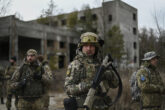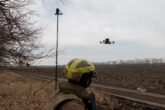January 08, 2018
Trump and His Strategy of Ambiguity
President Donald Trump’s rhetoric has shocked the diplomatic world. His size-of-nuclear-button tweets, his observation that China had been caught “red-handed” giving illegal aide to Kim Jong-un, his blunt talk about the defense spending of U.S. allies, all go against the trends of the past 25 years. But, the odd thing is, his words are having a positive effect. North Korea, for the first time in a generation, has opened talks with South Korea. China has increased its pressure on the Kim regime, and NATO members are spending more on their own defense. Critics, repulsed by Trump’s impolitic language and mannerisms, are reluctant to give him credit, ascribing improvements to processes in motion prior to his arrival in office or broader systemic forces. Thoughtful analysts and academics ought to consider, however, that the reappearance of “strategic ambiguity” as an approach to foreign relations is once again having a positive effect.
“Strategic ambiguity,” which refers to an approach that seeks to inject uncertainty of outcome into diplomatic dialogue to destabilize a nation’s enemies or competitors, is the term of art coined by historians examining President Dwight D. Eisenhower’s public statements during his eight-year administration, especially those that addressed the relationship between the United States and Taiwan, as well as those relating to his willingness to use nuclear weapons in Korea and Vietnam. Eisenhower’s deliberate vagueness, his obvious desire to introduce doubt into the minds of his enemies, carried extra weight given his reputation as a wartime commander and his willingness to throw the dice of chance during the invasion of Normandy. Opposing nations found themselves at a disadvantage simply because they were not certain what Ike would do and they knew that he was capable of doing anything.
Read the full op-ed in National Review.
More from CNAS
-
Defense / Transatlantic Security
When Defense Becomes Destruction: Austria-Hungary’s Mistake and Ukraine’s RiskThis article was originally posted on War on the Rocks. The southeastern Polish city of Przemyśl, with its elegant 19th century Habsburg-era train station, remains one of the ...
By Franz-Stefan Gady
-
Defense / Transatlantic Security
Ukraine’s Catch-22 MomentThis article was originally published in the Financial Times. In Joseph Heller’s wartime classic, Catch-22, the protagonist Yossarian seeks out the US army surgeon Doc Daneeka...
By Franz-Stefan Gady
-
CNAS Insights | Budgetary Own Goals Undermine “Speed and Volume”
On November 7, Secretary of Defense Pete Hegseth laid out a plan to overhaul the Department of Defense’s (DOD’s) acquisition system. Placing an emphasis on delivering new capa...
By Philip Sheers, Carlton Haelig & Stacie Pettyjohn
-
Drones: Who Is Making the New Weapons of War?
From Ukraine and Russia to Gaza and Sudan, drones have become a key weapon of war. Which companies are making them, and profiting from this rapidly expanding but controversial...
By Stacie Pettyjohn




